Data Validation
1. Body weight
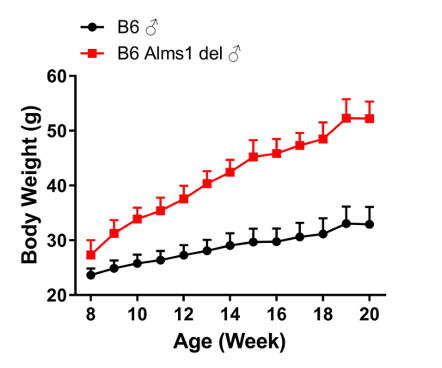
Figure 1. Body weight curves of C57BL/6-Alms1-del mice vs control mice. Data are presented as Mean±SEM.
2. Glucose tolerance test
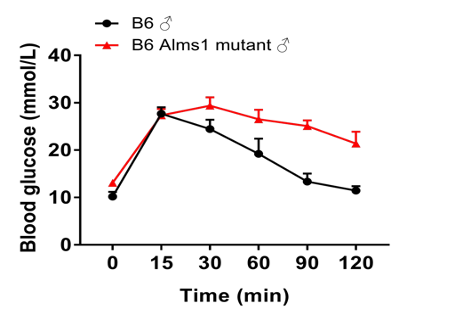

Figure 2. After ten weeks, studies on glucose tolerance were carried out on C57BL/6-Alms1-del mice. We measured blood glucose levels at 0, 15, 30, 60, 90, and 120 minutes. C57BL/6-Alms1-del mice have lower glucose tolerance, when compared to the control group. Data are presented as Mean±SD, with n=5. ****, p<0.0001; by unpaired two-tailed Student's t-test.
3. Serum insulin levels
Figure 3. Insulin levels were significantly increased in C57BL/6-Alms1-del mices. Data are presented as Mean±SD, n=5. ****, p<0.0001; by unpaired two-tailed Student's t-test.
4. Blood lipid levels
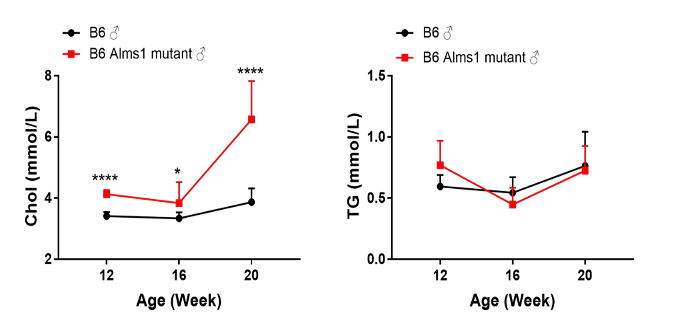

Figure 4. The hyperlipidemic phenotype of C57BL/6-Alms1-del mice became more severe with age. Data are presented as Mean±SD, n=5. **,p<0.05,**,p<0.01;***, p<0.001;****, p<0.0001; by unpaired two-tailed Student's t-test.
5. Liver enzymes

![]()
Figure 5. After 16 weeks, C57BL/6-Alms1-del mice showed liver damage.Data are presented as Mean±SD, n=5. **,p<0.01;****, p<0.0001; by unpaired two-tailed Student's t-test.
6. Fatty liver phenotype
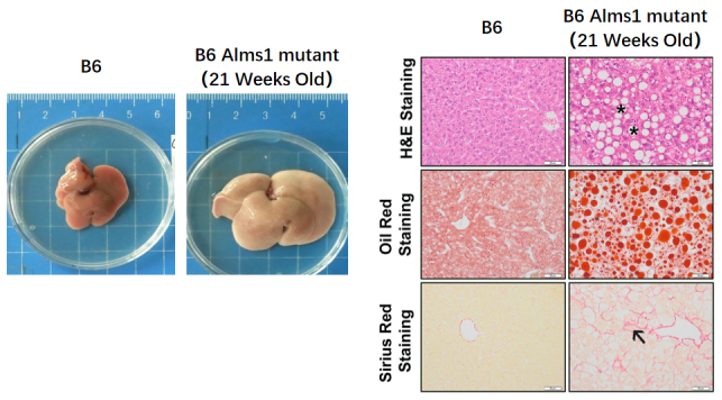
Figure 6. After 21 weeks, C57BL/6-Alms1-del mice developed a severe fatty liver phenotype that included steatosis, inflammation, and cellular vacuolation lesions.
7. Expression of inflammation, fibrosis-related biomarkers
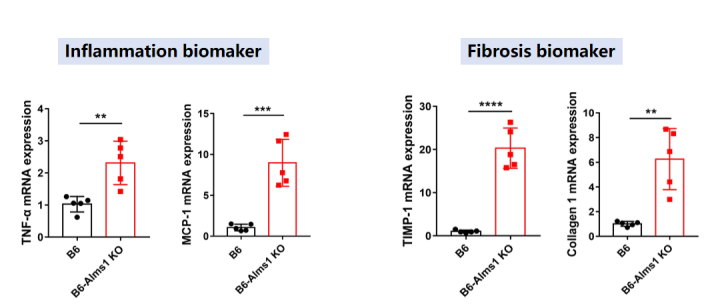
Figure 7. Expression levels of inflammatory, fibrosis-related markers were significantly increased in C57BL/6-Alms1-del mice. Data are presented as Mean±SD, n=5. **,p<0.05,**,p<0.01;***, p<0.001; by unpaired two-tailed Student's t-test.
Efficacy data
1. Semaglutide reduced the body weight, food intake and fasting blood glucose
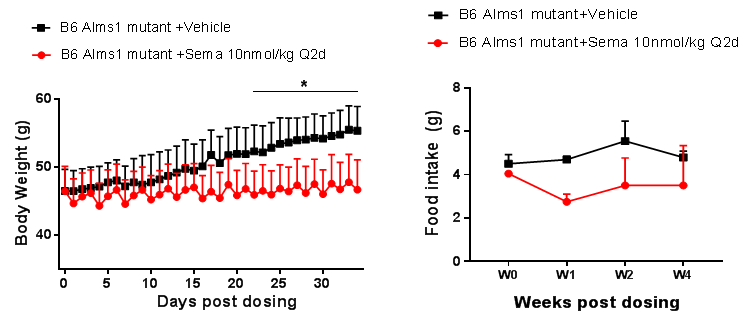
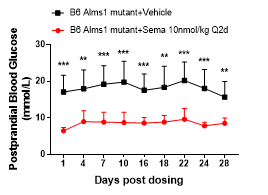
Figure 8. Semaglutide significantly reduced body weight, food intake, and postpranpranal blood glucose levels in B6-AIms1-del mice. Data are presented as Mean±SD. *,p<0.05;**,p<0.01;***,p<0.001; by unpaired two-tailed Student's t-test.
2. Liver enzymes and blood lipid levels


Figure 9. Semaglutide significantly improved liver function and dyslipidemia of the B6-Alms1-del model. Data are presented as Mean±SD.***, p<0.001;****, p<0.0001 by unpaired two-tailed Student's t-test.
3. Semaglutide improved liver function
![]()

Figure 10. Semaglutide significantly improved hepatic steatosis, inflammation, and ballooning in the B6-Alms1-del model. Data are presented as Mean±SD.*, p<0.05 by unpaired two-tailed Student's t-test.


